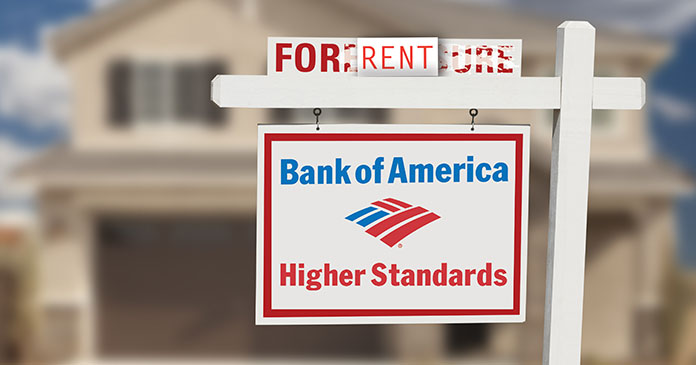To help struggling homeowners, Bank of America recently launched a test initiative that will give some a chance to rent the very homes they risk losing. The Charlotte, N.C.-based bank began sending letters accompanied with leases to 1,000 homeowners in Arizona, Nevada and New York.
The move isn’t anything other lenders haven’t tried, but it’s clearly a welcome alternative to foreclosure. Homeowners can avoid all sorts of headaches: Damaged credit scores; pricey moving costs; the hassles of transferring the little ones to a new school.
It also works out for BofA. As The Wall Street Journal noted, the robo-signing debacle that brought attention to unlawful foreclosures has made the process of redeeming properties tougher. The program might also save the bank from potentially big losses. And in terms of the broader economy, it could help stabilize prices by keeping properties off the already oversupplied for-sale market.
But if BofA’s “Mortgage to Lease” program is going to take off, the bank might have to work harder to attract financially strapped borrowers. In 2009, mortgage giant Fannie Mae rolled out a similar program. It hasn’t been widely used, and from that, we can say that it hasn’t been very successful. A spokesman for Fannie says it’s hard to say why, but some analysts have said banks simply didn’t market the program enough.
That could very well be. But it might also have to do with the program’s stringent rules. To qualify, borrowers must prove that they can take on monthly rent payments, which would be offered at the market rate. What’s more, the balance can’t exceed 31 percent of their gross income. In regular times, that might not be such a biggie—except the program targets homeowners in distress, who have either been tardy on mortgage payments or have stopped making payments altogether.
It’s true that the rate of foreclosures has slowed markedly. But since the onslaught of the financial crisis, the face of defaults has vastly changed in the sense that traditionally safe borrowers began falling behind on their payments. Whereas non-prime borrowers accounted for about 65 percent of foreclosure starts in 2006, prime borrowers have made up the bulk of all new foreclosure starts since 2009, according to a report by the Federal Reserve Bank of New York.
And given that statistics show more Americans have been doubling up with others instead of finding their own places to call home, it’s hard not to wonder if distressed owners could actually afford the monthly rent.
“There is that possibility but that’s part of the process in distributing the offers,” a BofA spokesperson says.
If the bank’s initiative is going to expand, it might have to be extra forgiving. Compared with Fannie’s program, BofA’s is somewhat more flexible in that it’s open to offering leases at or below the market rate. A program overwhelmingly based on rentals at a discount may or may not work for the bank financially. And it remains to be seen if that will keep the program from expanding much beyond the three test areas.
Still, BofA’s effort falls in line with the increasingly popular idea that rentals are an answer to the troubled housing market. This comes at a time when the rental market has become one of the few bright spots in an otherwise broken real estate market. In February, the federal government announced a test program to sell off part of its inventory of foreclosures to investors as long as they promise to rent out the properties for a certain number of years.
The Federal Housing Finance Agency, which oversees Fannie Mae and sister firm Freddie Mac, is soliciting investors to sell off 2,490 properties—the bulk of which are in Atlanta, Ga., Southeast Fla., the Los Angeles and Riverside areas of California and Phoenix, Ariz.
This isn’t to say that finding promise in the rental market is time wasted. But it could be easier said than done. Aside from Las Vegas and parts of California, there aren’t very many other places with high foreclosure rates and a robust rental market, says Jed Kolko, chief economist at Trulia, an online real estate site. Much of the overbuilding during the housing boom generally took place in suburbs and further out in rural areas, Kolko adds. However, the demand for rentals is occurring mostly within cities and urban areas.
BofA’s program may or may not turn out to be another piecemeal solution. After all, many economists and policymakers believe that debt forgiveness is the bigger answer. The idea has been politically divisive, but a new report has added a new side to the debate. The day after BofA made its “Mortgage to Lease” announcement, National Public Radio and ProPublica revealed the findings of a yet-to-be released study by Freddie and Fannie, which showed that reducing the amount homeowners owe on their mortgages would not only help borrowers, but would also save the mortgage giants money. Of course, the FHFA has been reluctant on the idea of reducing principles as opponents argue it would only encourage moral hazard.
Depending how seriously Congress takes the study, BofA and other lenders might have to put hopes in the rental market in the back burner.
Author: Nin-Hai Tseng, Fortune














